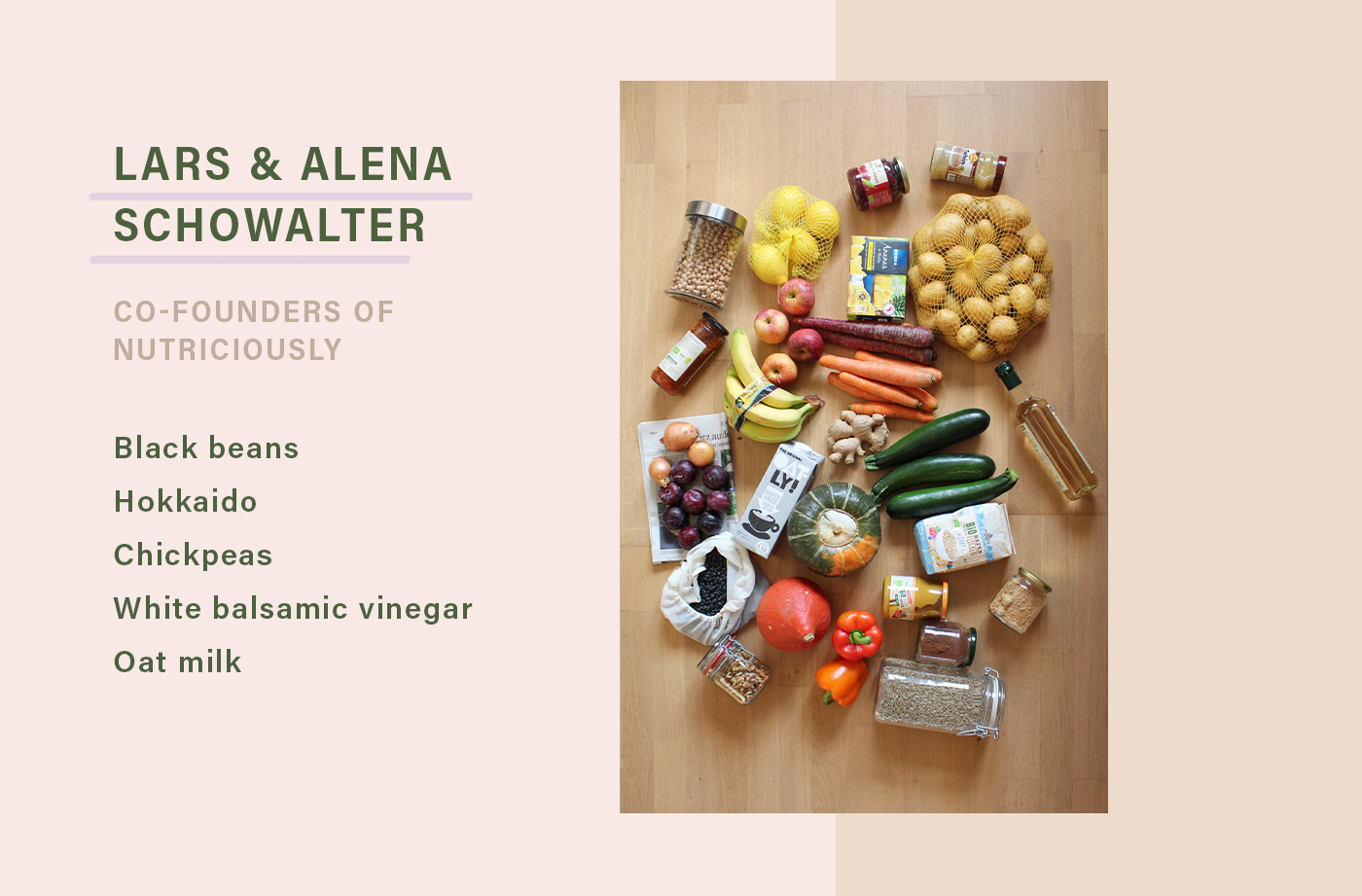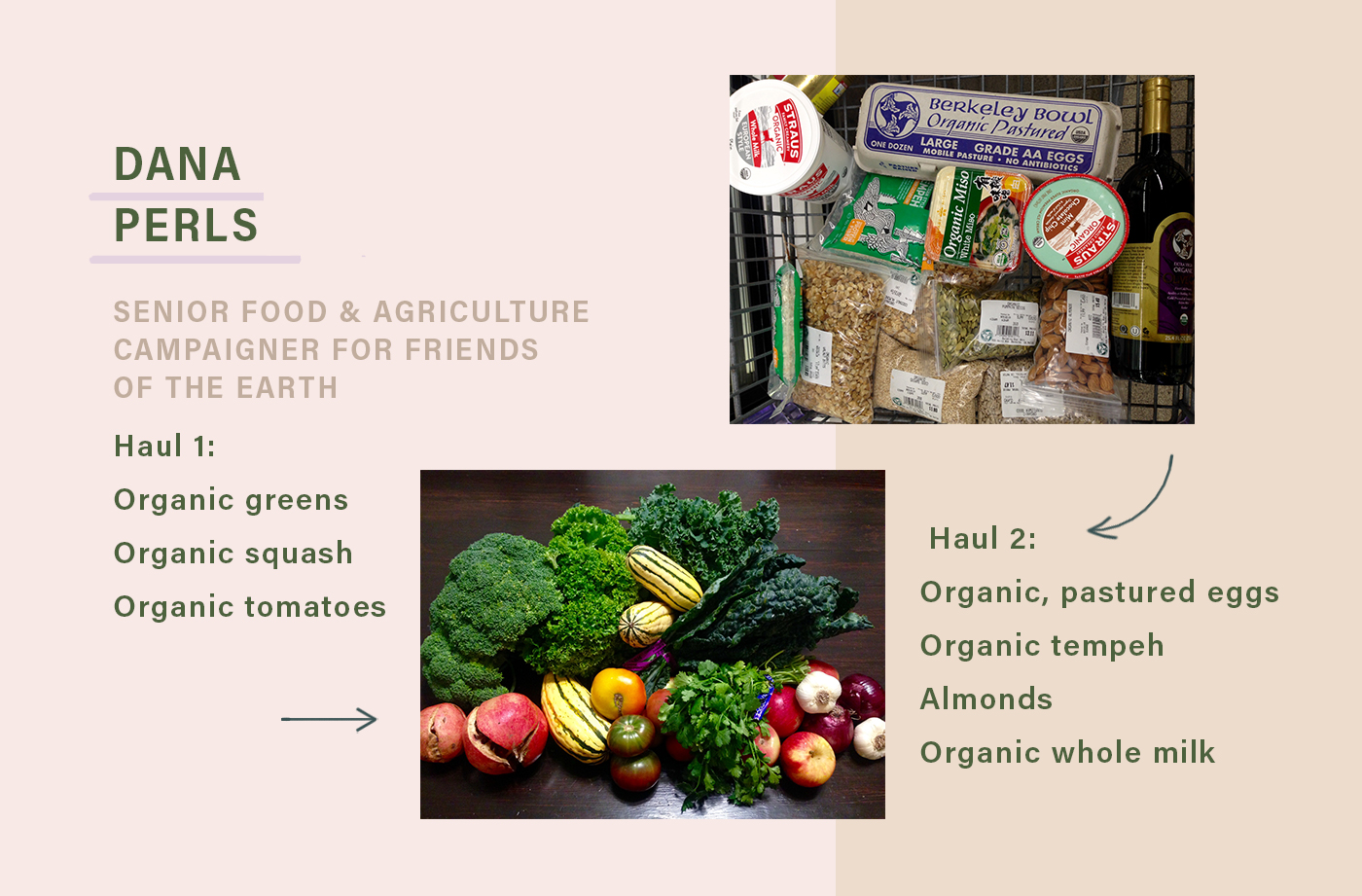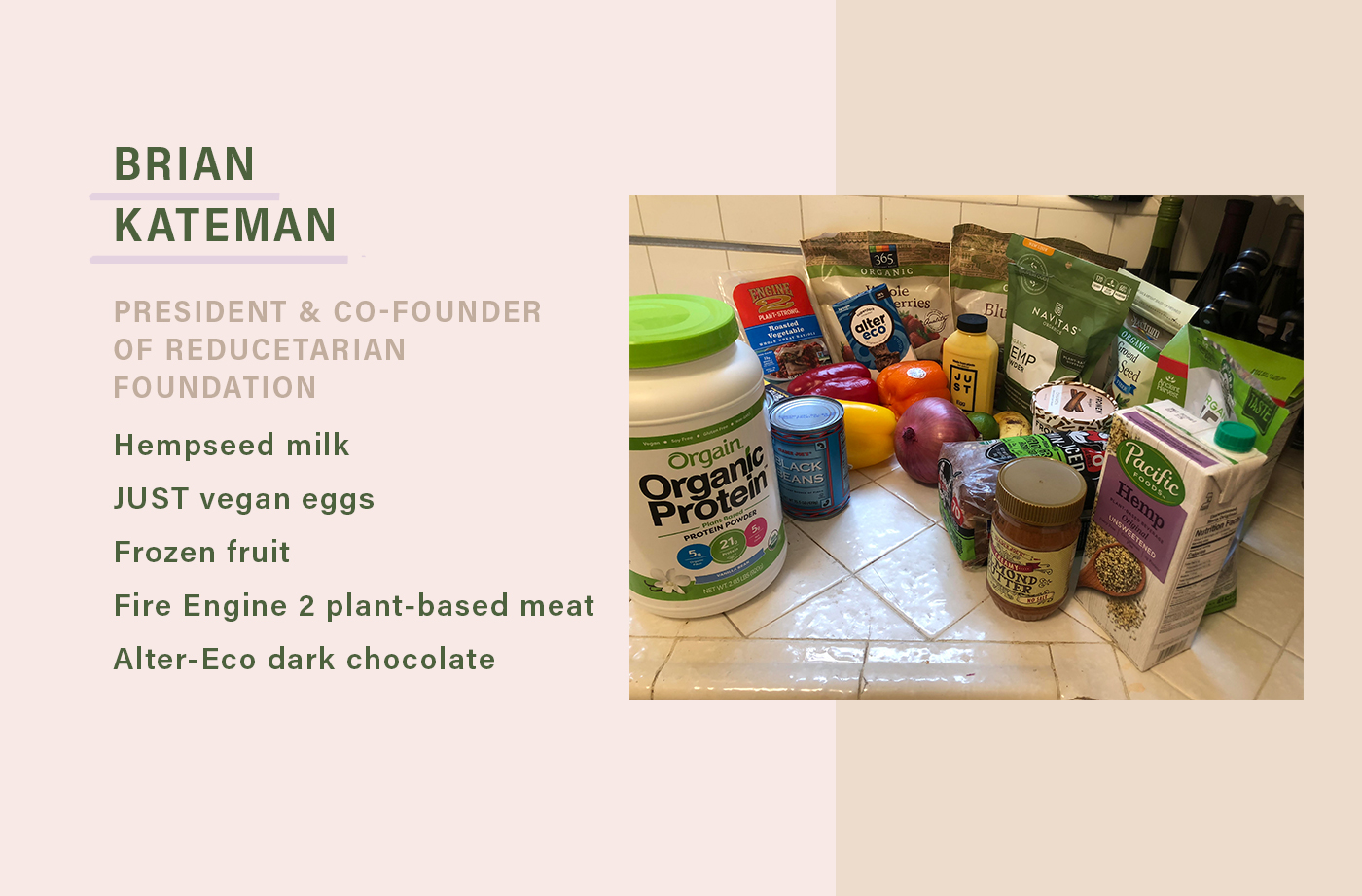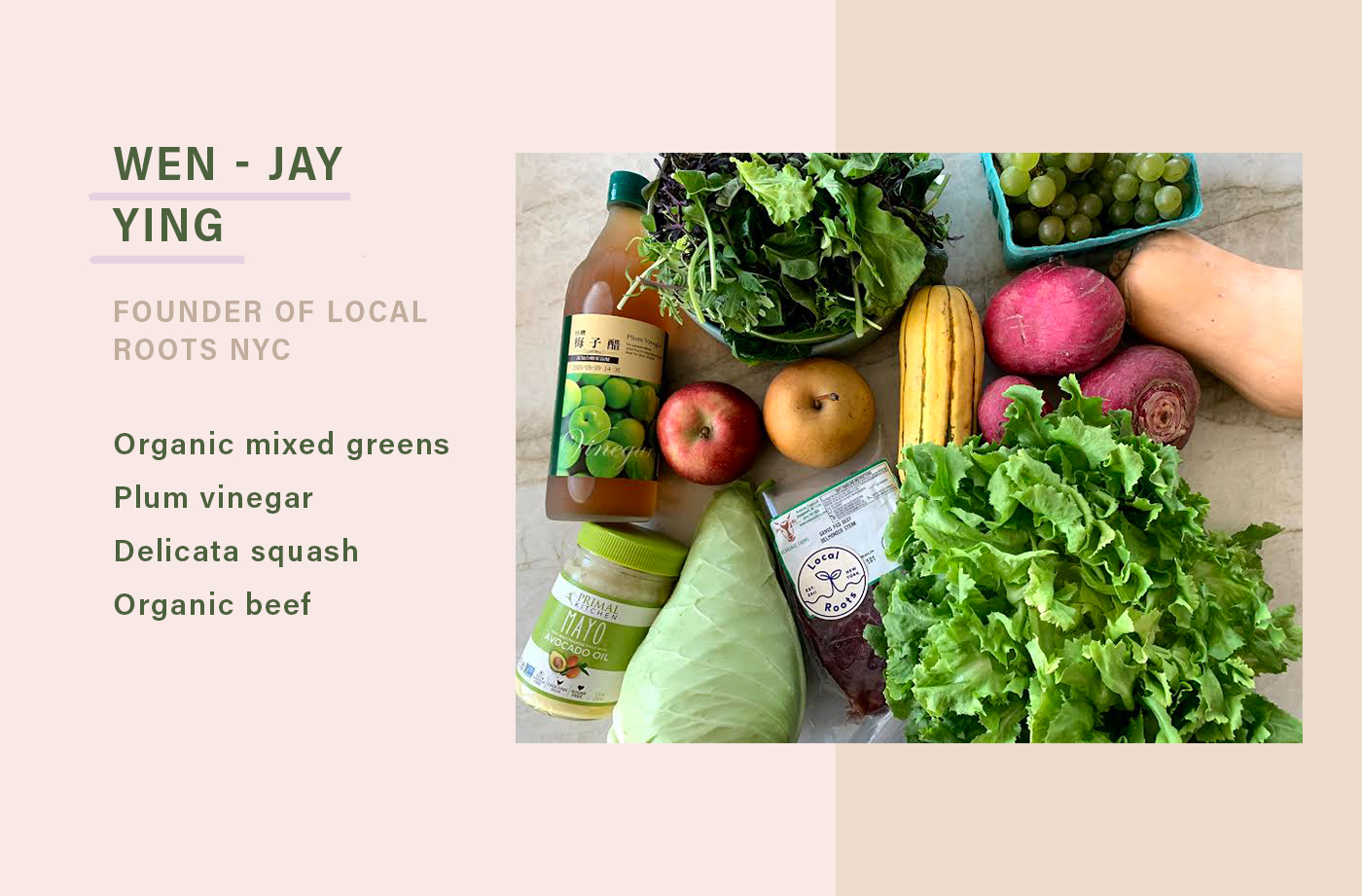Confused About What It Means to Eat for the Environment? Here’s How 4 Sustainability Experts Grocery Shop
In an effort to gain a little clarity, I asked four experts—all of whom work in different areas of the sustainability space—to reveal what goes through their minds when they grocery shop. You'll see that there isn't just one way to live sustainably; what that means and looks like can vary. The big takeaway is that getting into the habit of thinking not only about what's in your food but where it's coming from is a major step in the right direction. Here, each person shares their grocery haul photos and also explains the thought process behind their choices.
Keep reading to see what sustainable grocery shopping looks like for four experts.

Lars and Alena Schowalter, co-founders of Nutritiously
About the experts: Based in Germany, Lars and Alena Schowalter founded their company as a way to give people actionable ways to eat healthy and sustainably. For them, this means following a vegan diet. Alena is a recipe developer and also serves as the company's social media manager. Lars edits the blog and takes care of all-things technical. Here, Alena shares the deets behind their purchases.
Where they shop: "We buy fresh items from the farmers' market and then anything else from either a normal grocery store, or a zero-waste bulk shop we live by, which is where the bag of black beans and glass jar of chickpeas are from. We also get there by bike, going more frequently throughout the week instead of using a car to make one big trip."

{{post.sponsorText}}
Why they bought what they bought: "Lars and I get the bulk of our food from the produce section. We don't use any plastic bags when we pick out what we want; we just put it in our grocery cart as is. We wash everything before we eat it, so it isn't a big deal! All the produce pictured here is grown locally in Europe, except for the bananas, which we can't get locally, so we get fair trade."
What they plan on making with their haul: "For breakfast, we love having oats with fruit, cocoa, and date sugar, both of which are in the little glass jars next to the oats. For dinner, I love making herbed potatoes, stuffed peppers, and beans. The fresh ginger is used for both sweet and savory dishes in our kitchen this time of year because it’s tasty and also prevents colds. Our favorites are the two pumpkins, including the hokkaido [squash], which we’ll bake in the oven and then drizzle with some tahini. We use the oat milk for our coffee. It's our favorite plant-based alternative because it gets so frothy. And the white balsamic vinegar I use almost daily for sautéing vegetables and as a salad dressing."

Dana Perls, senior food and agriculture campaigner for Friends of the Earth
About the expert: Friends of the Earth is a non-profit dedicated to raising awareness about anything that's a threat to the environment, and also works to help make healthy, sustainable food more widely available. Perls has a background in biotechnology and genetic engineering and is passionate about environmental justice. Something noteworthy she's done: leading campaigns to ban or regulate pesticides used in agriculture. For her, eating sustainably means buying products that are organic, non-GMO, and mostly plant-based.
Where she shops: "I buy produce from the local farmers' market and anything I can't get there I get from the grocery store."
Why she bought what she bought: "I buy most of my vegetables at the local farmers' market. This allows me to directly support small local farmers and the local economy. But whether it’s in the store or the farmers' market, I only buy organic vegetables. I know farmworkers and people who live in agricultural communities, and they deserve to live and work without being poisoned by toxic pesticides in the air and drinking water."
"As for the nuts and seeds, I keep those at my desk to snack on throughout the day. As someone who eats mostly plant-based, I add them to my meals when I can, too. I also try to be conscious about buying nuts that are water efficient, particularly given that California is so vulnerable to drought. Also for protein, I buy organic tempeh, which is less processed than most soy products. When it comes to buying eggs, I buy organic, pastured and when I buy dairy, I look for certified organic, grass-fed products."
What she plans on making with her haul: "The vegetables I often just steam or stir-fry. I tend to eat pretty simply."

Brian Kateman, president and co-founder of Reducetarian Foundation
The Reducetarian Foundation's mission is threefold: by reducing meat intake, they aim to improve human health, protect the environment, and spare animals from unnecessary cruelty. For Kateman, the founder, this means eating plant-based most of the time, and making the best choices with what's available.
Where he shops: "I do my shopping at the grocery store, purchasing primarily whole, plant-based foods. My approach to plant-forward living is to keep it simple. Also, eating sustainably doesn't have to be all or nothing: We can all do our part by cutting back on the amount of animal products we consume. I also try not to go to do my shopping when my tummy is rumbling because I find that's when I make less-than-healthy choices!"
Why he bought what he bought: "When it comes to choosing a protein powder, I look for one that's whey- and sugar-free. Other than that, I rotate what I buy based on what's on sale or least expensive. As for the hemp milk, I really love it because it's chock-full of calcium, magnesium, and protein. I buy hemp seeds in their whole form too because they're a good source of healthy fats and add a nice creamy texture to smoothies when you blend them. Those frozen berries go in my smoothies, too. I'm a smoothie fanatic! Besides smoothies for breakfast, I also love eggs. Instead of buying eggs in a carton, which are often sourced from hens living in cruel environments, I buy these vegan eggs from JUST, which are made with mung beans. They taste just like the real thing!"
"Sometimes I buy plant-based meat alternatives, like the Engine 2 'beef' in this photo. They're not as healthy as whole foods, but they satisfy my occasional cravings for meat. Plus, they don't have the environmental or animal cruelty problems associated with factory-farmed meat."
"I have a bit of a sweet tooth and am a huge fan of Alter Eco chocolate because they have a lot of vegan options and the cocoa is ethically sourced. I also love dairy-free ice-cream, specifically from Frönen—which has only five ingredients, including banana, coconut cream, water, maple syrup, and cinnamon—and Cado, which has avocado puree as its number one ingredient."
What he plans on making with his haul: "I use the protein powder, hemp milk, frozen berries, and hemp seeds in my smoothies. My go-to recipe also has banana, strawberries, blueberries, chia seeds, and flax seeds. I also use seeds on top of avocado toast to add protein. I use the JUST eggs to make omelettes, which I also make with kale, onions, peppers, and whatever other vegetables I have in the crisper."
"I also like making veggie chili, adding in plant-based meat. I made it for my friends before and they were blown away."

Wen-Jay Ying, founder of Local Roots NYC
Ying founded food delivery service Local Roots NYC with the mission of making fresh and ethically sourced foods more widely available. Through Local Roots, New Yorkers can get groceries straight from local farmers delivered right to their homes. Ying says her mindset when grocery shopping is buying foods she loves from suppliers she trusts, whenever possible.
Where she does her grocery shopping: "Ninety-five percent of my food comes from Local Roots or from brands whose founders I've gotten to know through events."
Why she bought what she bought: "At Local Roots, we source our produce based on what's available at the time, so all these gorgeous greens, radishes, and squash were what's in season when I did this shopping. I do eat meat, but I make sure it's ethnically sourced. The livestock managers we work with raise their cows on multi-paddock grazing, which is fantastic for the land and sequesters carbon from the atmosphere. I bought the Primal Kitchen avocado oil mayonnaise because I've connected with some people from the brand in the past and they're supportive of the work I'm doing. Also, their products are really good quality."
What she plans to make with her haul: "The best part about buying seasonal items is that I can make the same dishes, just with slightly different ingredients, which prevents me from eating the same old things all the time. With this haul, I plan on making cabbage steak, roasted delicata squash and apples, miso-braised turnips, butternut squash with salad greens on top, and I’ll turn the mayo into aioli for the steak. The plum vinegar I love to cook with or use to make mocktails. My mom loves to make her salmon with it, giving it a sweet finish."
If you do your grocery shopping at Trader Joe's, here's the best items to buy, according to a registered dietitian:
Here are six grocery shopping mistakes even healthy eaters make. Plus, tips on how to read a food label.
Loading More Posts...